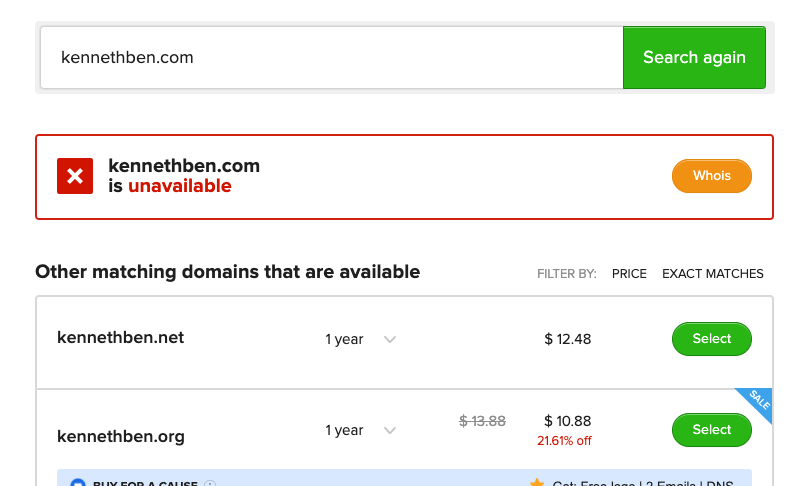How to Start Your Website Design Journey
In this post I will highlight some crucial early decisions you’ll make about your website: choosing a website name and planning how your site is structured. The goal is making it easy for customers to find their way around and get what they want. Because a happy customer equals a more successful business, right? Ready to go?
 Now you have gotten the insight on your domain information and finally decided on an available domain name to use, it’s time to purchase your domain name.
Now you have gotten the insight on your domain information and finally decided on an available domain name to use, it’s time to purchase your domain name.
First things first, your domain name. That’s what people will type into a web browser to find you.When choosing a domain name, you first need to check if the one you want is available. There can only be one “KennethBen.com” on the web for example, and if someone has already claimed it, you won’t be able to use it. So, how do you know if the name you want is taken? Just head over to “whois.com” and type in the search box, the domain name you plan to use, for example “kennethben.com”. The site will let you see if someone is already using the name you want. And, if they are, you will see an option to click and see more details about that particular registered domain, the site will also suggest another similar name that’s available for you to use with other domain extensions such as .net .org .co etc. see screenshot below… You will also see pricing options for domain names on Whois.com, but don’t purchase from the there. If you read further, I will show you how to get a domain name for FREE by just buying hosting, you will need to host your website after purchasing your domain name right?.
 Now you have gotten the insight on your domain information and finally decided on an available domain name to use, it’s time to purchase your domain name.
Now you have gotten the insight on your domain information and finally decided on an available domain name to use, it’s time to purchase your domain name.
Get a FREE Domain When You Buy Hosting
Based on my experience with a few domain and hosting companies, I strongly recommend Namecheap. The website you are currently reading this article is hosted with Namecheap. You get a FREE domain when you buy hosting from Namecheap using a special promo option which is available to both newbies and oldies. Buying your web hosting and domain name together using this special Namecheap deal comes with plenty of free must-haves including:- Free Domain Privacy
- Free SSL Certificates
- Free Website Builder
- Free Email
